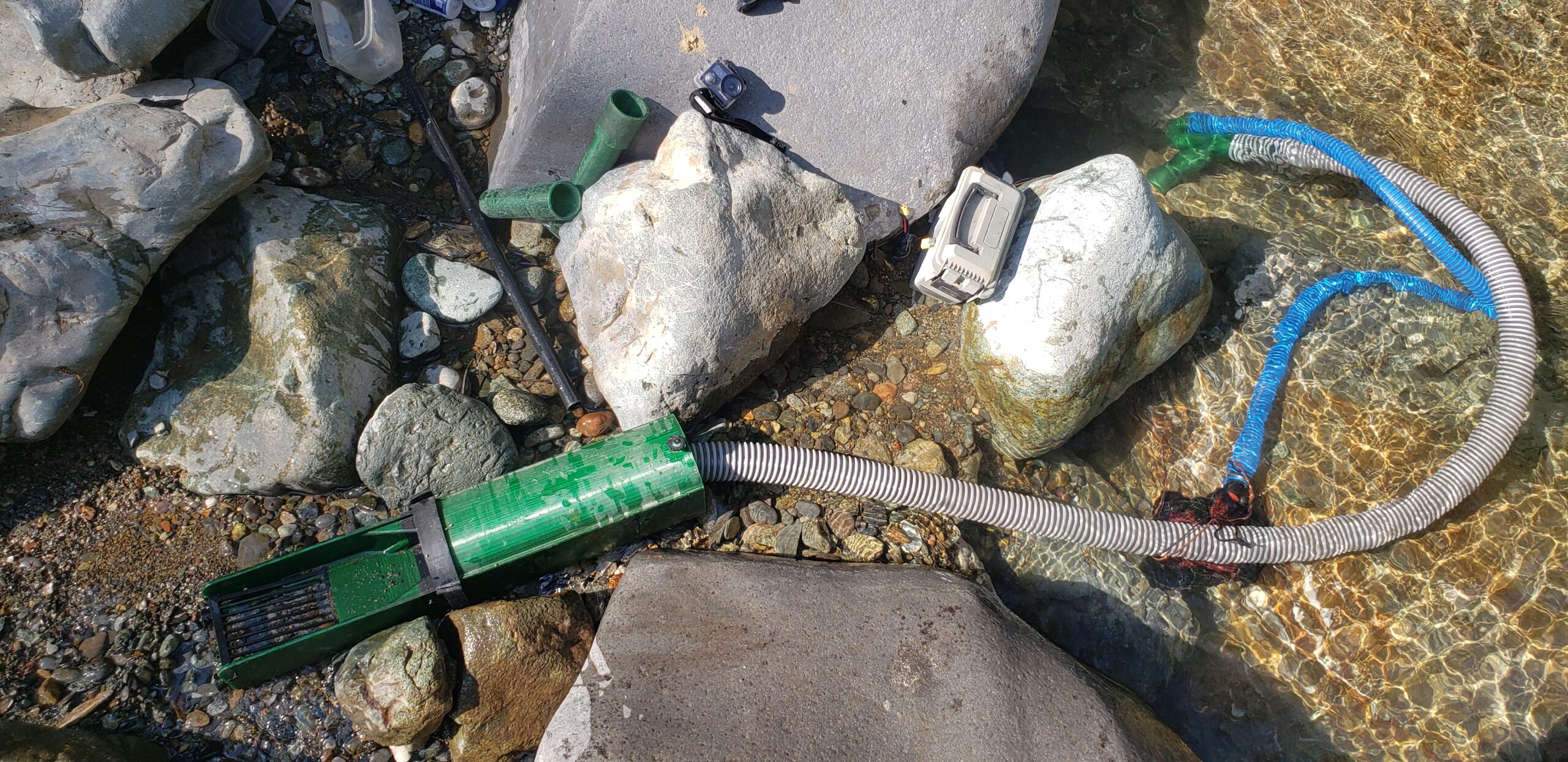

I made a removable restriction nozzle so I could get my hand in to clear blockages, and for easy replacement as it wears out. The water was only 2 feet deep where I was working, but the old venturi did not have had that sort of power. The result was great, power increase was such that the water and gravel came up the hose with such velocity at high rpm, that it shot right over the sluice box and landed back in the creek 2 feet beyond it! I had to slow it right down to be able to wash the gravel. I will try to load 2 photos showing what I came up with. I used alloy for weight reasons, but also because it was what I had on hand. I lined up the new 3/4 inch jet to be slightly pointing downward but up the center of the pipe - so the water jet would hit the bottom of the pipe about 3 or 4 feet up. Mostly because my hand wouldn't fit up past the nozzle restriction. The old shop bought venturi had worn totally out and was very hard to get jammed rocks out of. My pump is a 5 hp Honda driving an Onga pump - a factory built pump/motor unit available here in NZ. The last one was four inch and I used a 3/4 inch jet with a flare out to the 1 1/2 inch supply.


VORTEX removal rates are ACTUAL removal rates as seen with actual material moved using Magnetite black iron sand and rocks weighing 2.375kg per liter as to the sample product.Hi there, I have made a few suction venturi nozzles over the years, as I couldn't find or couldn't afford store bought. VORTEX performance figures DO NOT have a small print clause with an Asterix symbol next to figures which would represent "best case Scenario" removal rates as opposed to actual removal rates. Suction does the work and water flow continues the work done. Once the hose is clear then water flow takes over. Powerful, simple, effective.Įxample: Getting a "RIDICULOUSLY THICK MILKSHAKE" ® ™ to move through a straw is similar to dredging a very sticky seabed and suction is key because if you drive a suction hose deep into sticky mud the water flow in the suction hose will often stall and the hose is essentially filled with a 'plug' of mud and only high suction will clear the hose. The 3D printed reduction/injection insert piece has a final reduction of 1/4' from 3/4' supply. I figure the pump will produce about 10 - 12 psi. Vortex dredges have been designed to combine high suction values and high water volumes to tear up sticky soils with very high suction then keep it flowing with high water volume. This is my 1 1/4' venturi suction nozzle for my electric micro dredge powered by a 24v 3700gph bilge pump.


 0 kommentar(er)
0 kommentar(er)
